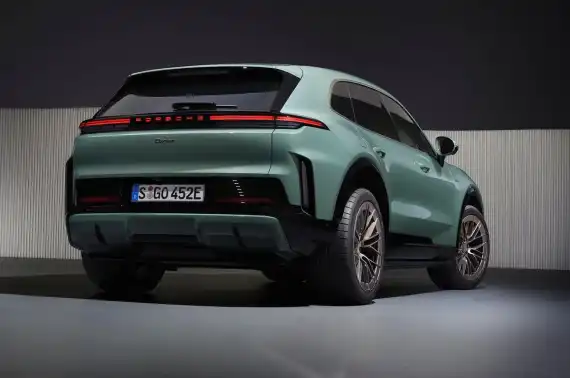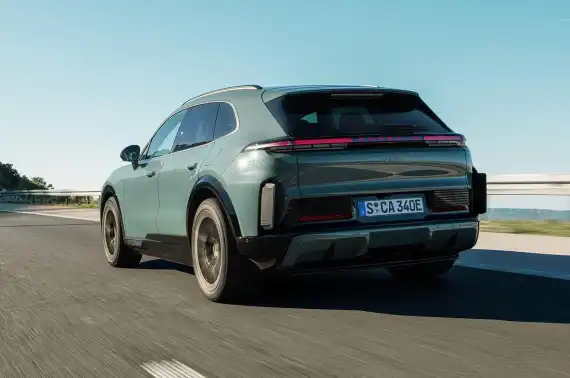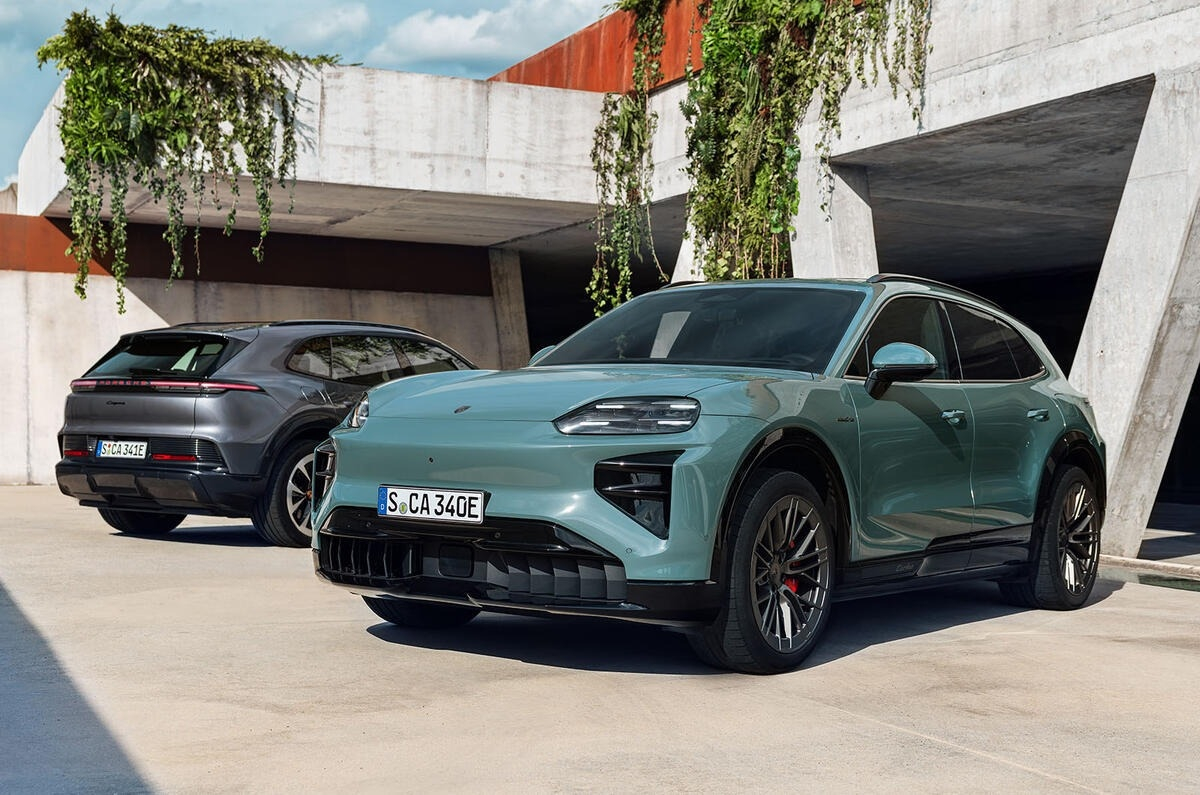
Porsche's first electric Cayenne is also its most powerful model ever, launching with huge performance and major tech upgrades.
Porsche has revealed the new Cayenne Electric, its third full EV after the Taycan and Macan Electric, and it’s being pitched as the start of a “new era” for the brand. It’s the first Cayenne since the SUV launched in 2002 to be sold without a combustion engine, thanks to its shift to the PPE electric platform.
Porsche originally planned for 80% of its range to be electric by 2030 but later paused that strategy due to slower EV demand. As a result, the updated third-generation petrol and hybrid Cayenne will continue alongside the new EV into the 2030s.

Porsche marketing chief Matthias Becker said the electric Cayenne “sets new performance standards”, while combustion and hybrid versions will still have a future.
The Cayenne Electric arrives mid-next year in two versions. Prices start at £83,200, with the range-topping Turbo priced at £130,900.
Powertrain
The new fourth-generation Cayenne moves from Volkswagen Group’s MLB platform to the dedicated PPE EV architecture shared with the Macan Electric and Audi Q6 E-tron.
The flagship Turbo uses a dual-motor setup producing an extraordinary 1140bhp and 1106lb ft with launch control. That results in 0–62mph in 2.5sec, 0–124mph in 7.4sec, and a 162mph top speed, putting this 2.5-tonne SUV in hypercar territory. It even eclipses the Taycan Turbo GT’s output, making it the most powerful Porsche road car ever.

A key part of this performance comes from a motorsport-derived rear motor with direct oil cooling for sustained power. In normal driving the Turbo makes up to 845bhp, with an extra 174bhp available for 10 seconds via a ‘push to pass’ button.
The entry-level model also has dual motors, delivering 402bhp, matching the Macan 4 Electric. It reaches 62mph in 4.8sec and tops out at 143mph. Both models can tow up to 3.5 tonnes.
A 113kWh battery powers both versions. The entry car offers up to 398 miles of range, and the Turbo up to 387 miles, outperforming rivals like the BMW iX and Lotus Eletre.
The 800V electrical system supports DC charging at up to 390kW, allowing a 10–80% top-up (around 200 miles of range) in under 16 minutes. Regenerative braking can recover up to 600kW.
The Cayenne Electric is also the first car available with wireless charging, offering 11kW inductive charging through an optional system costing £5000 in total.
A rear-wheel-drive, single-motor version is expected later.

The Turbo also gains Porsche Active Ride suspension, which drastically reduces body roll and pitch, plus torque vectoring, a rear limited-slip differential and rear-wheel steering.
Design
The Cayenne Electric has been redesigned to improve aerodynamic efficiency. The traditional wide grille has been replaced with a smooth panel, and the front end is lower. Active aero features include moveable cooling flaps, air curtains, an adaptive roof spoiler, a rear diffuser and, on the Turbo, active rear blades.
The result is a 0.25 drag coefficient better than the Lotus Eletre and close to today’s most efficient EVs.
An optional off-road pack improves approach angles and adds extra underbody protection.
The new Cayenne is 55mm longer, with much of that gained in the 3023mm wheelbase. Rear legroom increases by 130mm.
Interior
Inside, Porsche has introduced a new Flow Display setup. It uses a large OLED panel that combines the instrument cluster with a 14.25in infotainment display, plus an optional 14.9in passenger screen. Physical controls remain for key functions like climate and audio.

A head-up display covering 87in of the windscreen is optional.
The Cayenne Electric features “panel heating”, warming seats, armrests and door panels. Rear seats are electronically adjustable.
Boot space is 781 litres, far more than a BMW iX or Lotus Eletre and expands to 1588 litres with the seats folded. A 90-litre front boot provides extra storage.
At launch, buyers can pick from 13 exterior colours, nine wheel designs (20–22in) and 12 interior themes, with five interior packages available.




